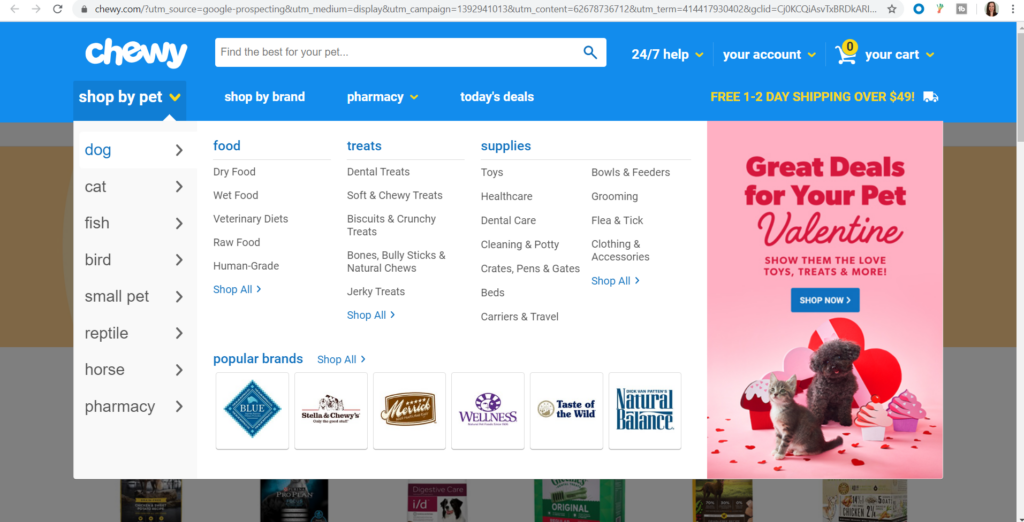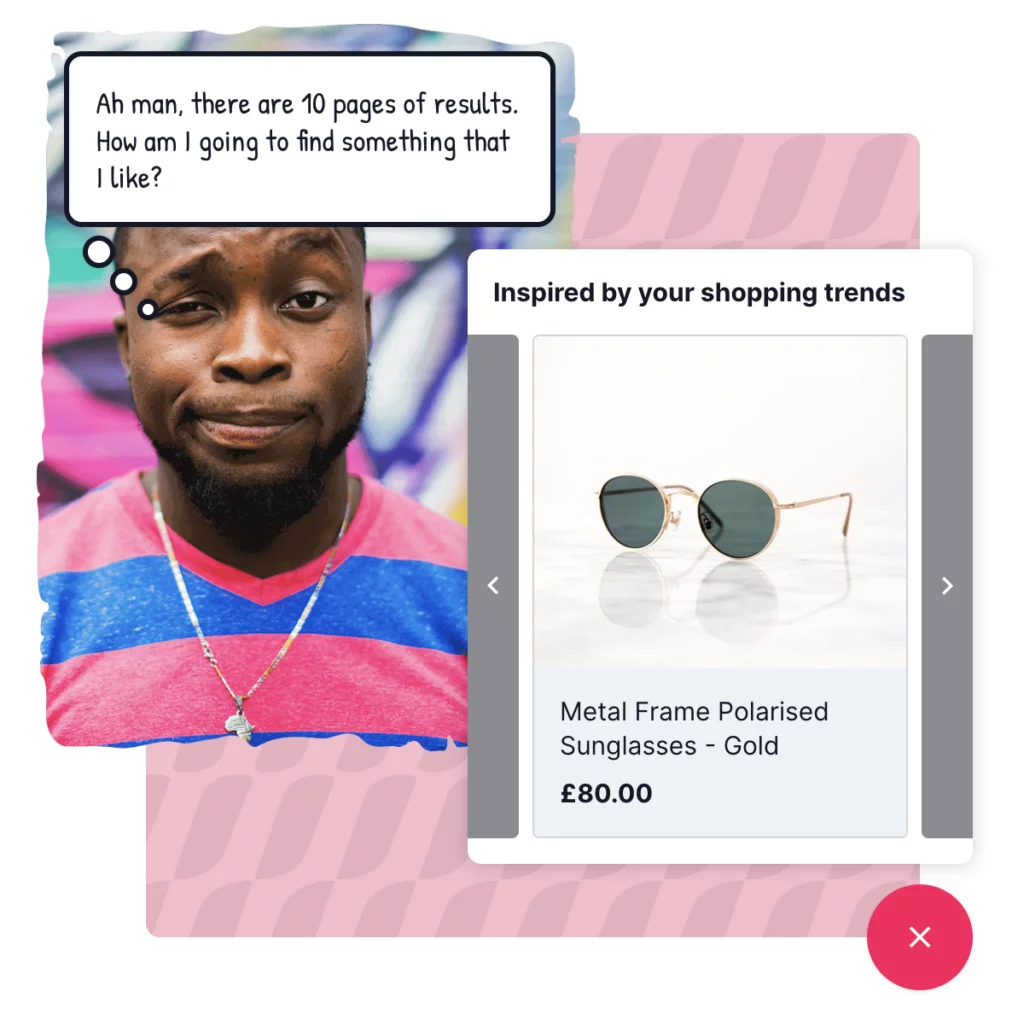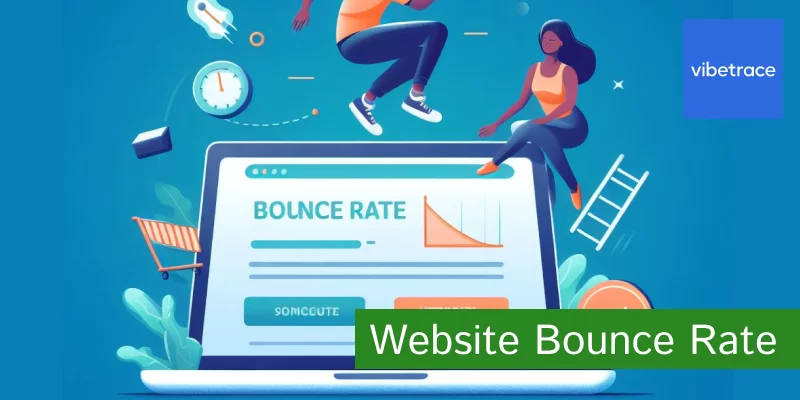Ecommerce is growing rapidly every year. In 2020, ecommerce represented 27.5% of all UK retail sales, and that’s forecasted to grow to 32.1% by 2024.
As with any market experiencing rapid growth, it’s becoming an increasingly competitive one. That means you need to get things right if you want to see your ecommerce site do well.
That’s not an easy task. Owners and managers need to keep a close eye on the various indicators that show what you’re doing right and what still needs some work.
Monitoring your key metrics and KPIs is essential to make your business the best it can be, but it can be bewildering sometimes knowing which ones are most important.
ACR (average conversion rate), AOV (average order value), CTR (click-through rate) all need to be watched closely. Another metric to keep an eye on, too, is your bounce rate.
What is bounce rate?
Your website’s bounce rate means that potential customers have visited a single landing page (or your homepage) on your ecommerce website and taken no actions before leaving the page. The rate itself is the percentage of total visitors who behave that way. It’s an important indicator of how well customers are engaging with your site.
Marketers need to pay particular attention to higher bounce rates and single-page sessions
as they can have major implications for your digital marketing strategy.
A higher bounce rate could be due to slow loading times for your landing pages, among other factors. Identifying—and rectifying—any issues is crucial so that you can achieve a low bounce rate and aim for those magical higher conversion rates.
Another thing to emphasise here is that Google and other search engines also use high bounce rates as a factor to rank your website. If you have a high bounce rate and don’t address it, then the organic search ranking of your online store may drop.
How do you calculate bounce rate?
Bounce rate’s not too complicated and you can use tools such as Google Analytics to help you.
Put simply, your bounce rate is calculated by dividing the number of visitors who leave without taking any action in any given time period by the total number of visitors to your site and multiplying by 100.
For example, if your website had 10,000 visitors in a 30-day period, and 1,000 of them left without going further, then your bounce rate would be 10% (which would be a very good bounce rate).
What is an average bounce rate?
The average ecommerce bounce rate is 47%. However, as with other metrics such as ACR, average bounce rates can vary across different sectors and even by the type of device used to access your site (tip: If your site is not optimised for mobile access, you will see a high bounce rate from consumers who are using mobile devices).
Do you like this article?
Join our CX for Retail dedicated newsletter!

Stay connected to what’s really important to optimize your digital revenues.
By clicking the button, you accept our Terms & Conditions. Also you will need to confirm your email address.
Are all bounces created equal?
Now this is where it gets interesting. A bounce is a bounce, right? Not necessarily so.
In fact, there are three categories of bounce:
- Hard. This is when a visitor presses the back button almost instantaneously. It’s the virtual equivalent of walking into a shop, realising they don’t stock what you’re looking for, and turning around and leaving.
- Medium. A medium bouncer may spend slightly longer on your site before leaving. To continue the in-person retail analogy, it’s like entering the store, briefly browsing its items, realising they’re not to your taste, and then walking back out.
- Soft. These visitors spend a little longer on your site. They may read reviews or descriptions, then leave. It’s like they enter the shop, browse a few of the aisles, look at some price tags, and maybe even try something on, before then changing their mind and leaving. This category of bouncers are the ones you want to think about trying to re-engage through remarketing, personalised emails, or other approaches.
Five tips and tools to reduce your bounce rate
The first thing to note is that there can be many different reasons for a high bounce rate so there is no “one size fits all” solution to lowering it.
What you have to first identify is what’s causing the high bounce rate in the first place. Some of the different reasons for high bounce rates can include:
- People couldn’t see what they were searching for.
- They clicked on your site by accident.
- The page was loading too slowly.
- There was an error on the page.
- Your site navigation was too confusing.
- Your site content did not meet their needs.
Page speed
An average page load time for a website is around 4.3 seconds. This amount of time can vary from device to device and if you have not optimised your site for access from mobile devices, then it will take longer for those users. To get real insights into your page speeds, you can use Google’s specialist tool.
This is an area where you have to seek help from your developers and IT team. Increasing single page loading times can include actions such as optimising the code used, optimising images, or improving your server response times.
Your developers should be carrying out continuous testing at all stages of development. They should also implement production testing to ensure quality from day one.
Analyse
Are certain pages showing a higher bounce rate than others? Use Google Analytics to identify the main exit pages (the pages people leave your site from).
GA can show you the exit rate on individual pages as well as page views for your site as a whole. If there’s a lot of disparity between the two, then you can look closer at the pages causing the “problem”.
If certain pages are experiencing significantly higher bounce rates, then you can run A/B tests to see if you can optimise them. Testing all the elements on these pages can help you make the adjustments that will hopefully lead to a lower rate and better user experience. Consider using test automation on your site wherever you can.
You can also identify the webpage with the lowest bounce rate and the one with the highest bounce rate and use them as benchmarks for identifying what works and what doesn’t. Finally, check any referral links as they may also contribute to a high bounce rate.
Improve navigation
If someone visits your site and sees that your navigation is poor and confusing then they will almost always… bounce. If that’s one of the factors leading to higher bounce rates, consider the following solutions:

- Make navigation and usability consistent across your entire site.
- Have clear categories. With most ecommerce businesses having multiple categories and products, you want your menus to be as simple as possible.
- Use popups sparingly, and only to help the customer.
- Use clickable links. Help your customers to find things more easily by making categories and subcategories clickable.
- Don’t just use a clickable image, add text to it too. What seems obvious to you when designing the page may not seem obvious to a customer.
- Ensure you have good search options. People do not want to click through multiple pages to find one specific product. Always include an easy to use search feature with advanced options if possible.
Help your customers
While recognising that ecommerce is the future of retail, you can still learn from traditional physical stores.
Optimise the online shopping experience with onsite technology like our Digital Assistant on your site.

It can answer simple questions or make product suggestions related to what visitors originally searched for or what they’re viewing at that moment, and help guide them through the checkout process.
A great advantage of the Digital Assistant is that it can guide customers throughout their shopping experience, and also helps you learn more about what your customers like and what they need. As a result, you can improve your SEO and your CRO (conversion rate optimisation).
Automation will continue to play an increasing role in ecommerce. Many business owners may ask what is cognitive automation? Knowing the answer and how it can help you will be crucial to the future of your business.
Connected media
Your customers want choice. They want to connect with you via email, messaging, or other tools such as an online video caller, to interact with you and to learn about you via the platforms or channels they find most convenient.
That means utilising Connected Media as much as possible to improve the customer journey. Think of your business as a busy roundabout with multiple roads leading onto it.
Take your digital advertising to a whole new level where a customer might learn about a product on social media, read the reviews, then click on the link or CTA (call to action) taking them to that product page on your site.
The takeaway
Achieving and maintaining a low bounce rate is just one part of the ecommerce puzzle.
A successful ecommerce business is not always about offering the best products on the market, it’s about how you sell them, how good your customer service is, and how you execute your ecommerce strategies.
Identifying any issues that cause high bounce rates is your first step. The second is to identify and use any tools that can improve the customer journey and help improve your conversion rates.
Ve’s Digital Assistant and Connected Media solutions can play a big part in optimising your online store and seeing conversions and sales rise.

